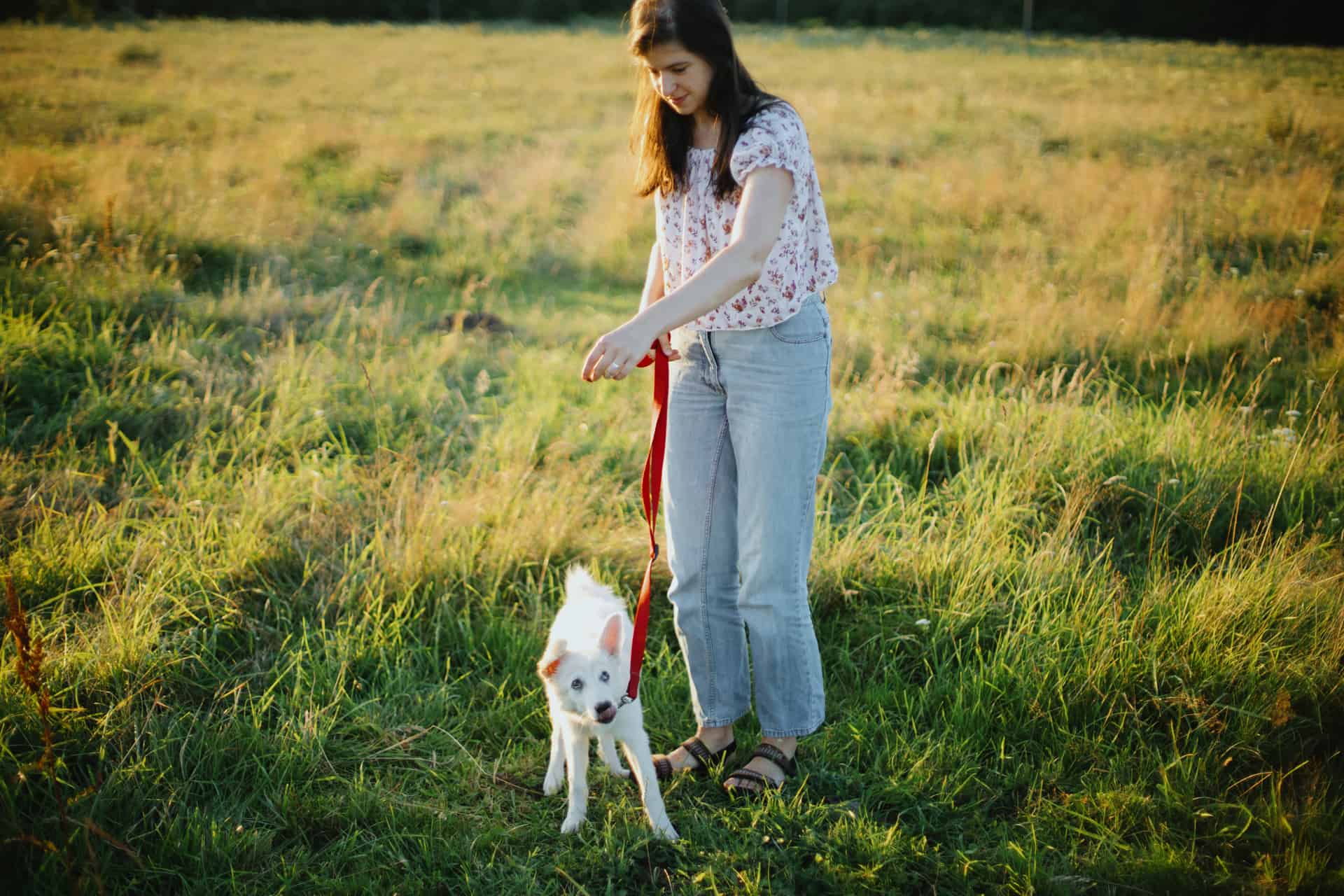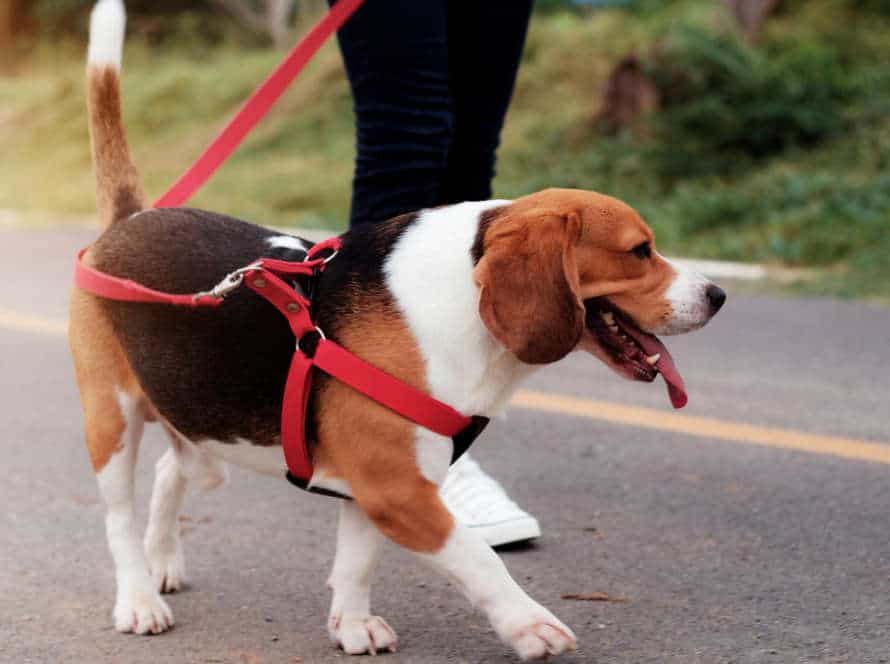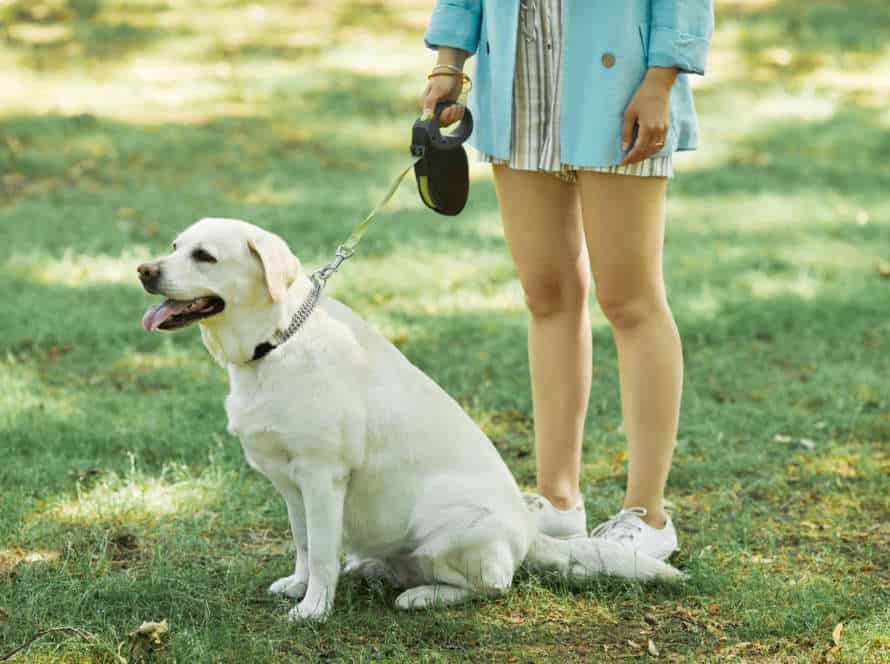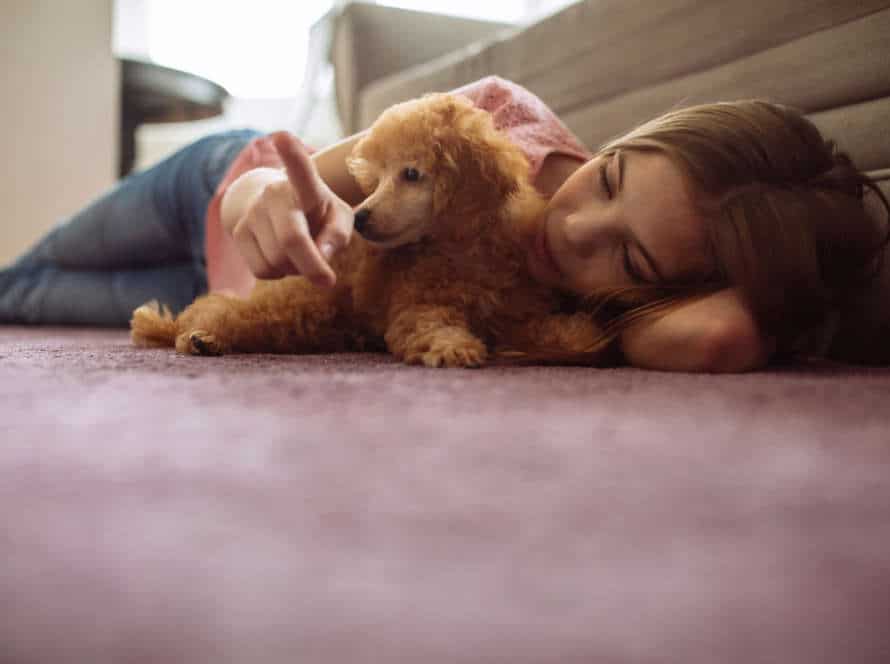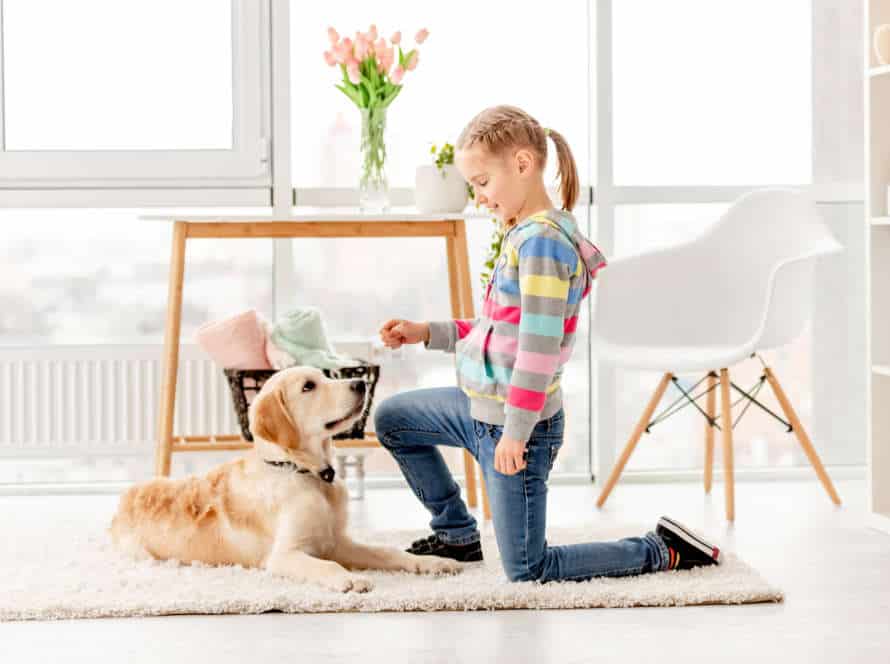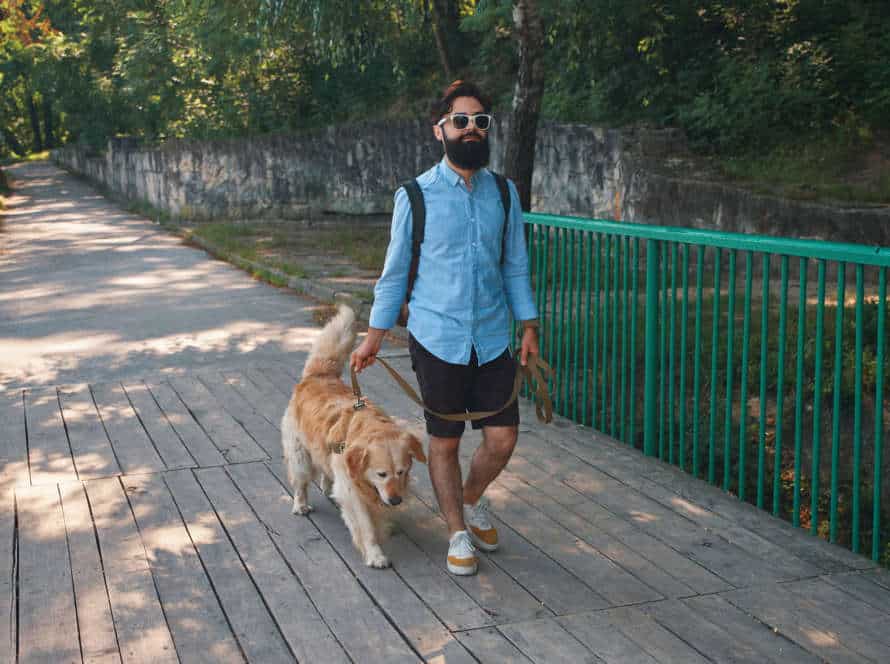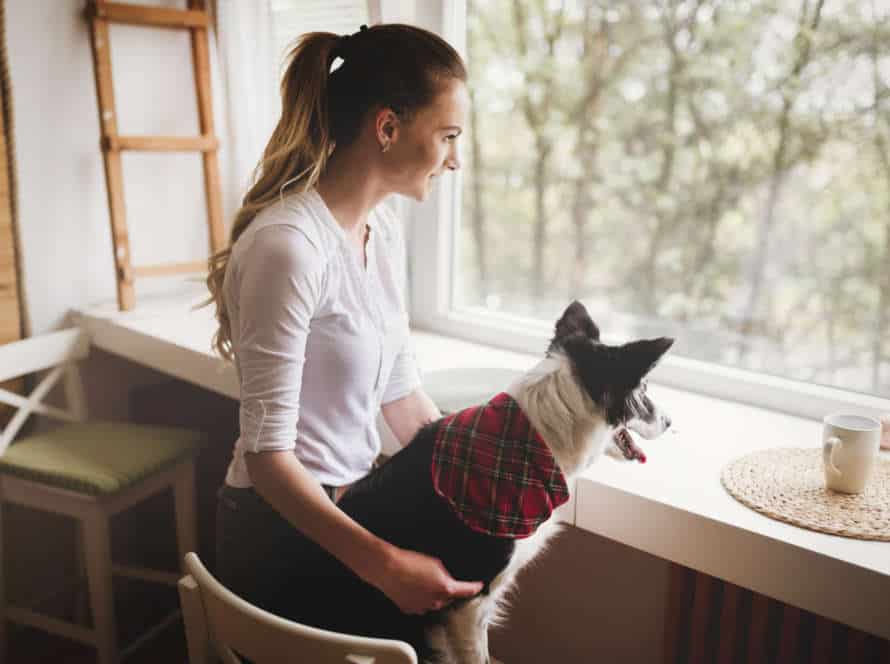Teaching Your Dog to Adjust Their Pace on a Loose Leash
Getting your pooch to adjust their speed when on a loose lead is fundamental for a pleasant, stress-free walk. A loose lead gives them the freedom to move around more and by teaching them to adjust their pace, they’ll keep the right walking speed while still having a relaxed and comfortable lead.
Here’s how to do it:
- Start walking with your pup on a lose lead.
- When they start to pull, stop and wait.
- Once they look back at you, say ‘Let’s Go‘ and start walking again.
- Reward them with treats and compliments when they get the hang of adjusting their speed.
- Repeat this every time they pull on the leash or get ahead of you. This will teach them to follow you and adjust their speed as needed.
Be patient and consistent with your training to get the best results. Pro tip: Add training sessions to your daily walks for a pleasant and constructive bonding time with your pup.
Understanding the Principle of Loose Leash Walking
Loose leash walking is vital for all dog owners. It keeps your pup safe and makes walks stress-free for both you and your pup. To teach this skill, understand the principle of loose leash walking. Mastering the basics will lead to success.
Definition of Loose Leash Walking
Loose leash walking is a skill to teach your pup to walk with you, without tugging or pulling. First, select a comfy leash and collar. Walk with a steady pace and use a command to prompt your pup. If the leash is taut, stop and wait for your dog to adjust their pace. Practice in low-distraction area first. Then gradually move to more challenging ones. Be consistent with your training. Reward your pup for good behavior and gently correct any unwanted behaviors. It takes time and practice to master this skill. But it’s a great way to have a calm and peaceful walk with your pup.
Importance of Loose Leash Walking
Loose leash walking is an important skill for dogs. Not only does it make walks pleasurable, but it also ensures safety for the dog and its owner. Knowing the principles of loose leash walking and helping your pup adjust their pace on a loose leash can give you a happier and healthier relationship.
The principle of this type of walking means teaching your pup to walk calmly and comfortably on a slack leash, no tugging or pulling. You should reward your pup when they stay loose, using positive reinforcement like treats and compliments.
It’s essential to teach your pup to adjust their pace on a loose leash. They should stay with you, stopping and starting as needed while staying on the slack leash.
With patience and consistency, you can teach your pup to walk calmly on a loose leash. This will lead to a more enjoyable walk for both you and your pup.
Benefits of Loose Leash Walking for Dogs and Owners
Loose leash walking is a great training technique! It has many benefits for both dog and owner. It means teaching your pup to calmly walk by your side, instead of straining against the leash. Here are its advantages:
- It’s Safer – Dogs can pay attention to their environment and stay close to their owners.
- Positive Behaviour – The bond between pet and owner is strengthened.
- Exercise – Walking is now more enjoyable and healthier.
- Training – Good behaviour is reinforced and dogs’ quality of life is improved.
With patience, your pup will be happier, healthier, and better behaved!
Steps to Teach Your Dog to Adjust Their Pace on a Loose Leash
Make a special connection with your canine companion by teaching them to walk on a loose leash! It’s great for both you and your pup – they can move around, but you still have control. Here’s how:
- Start with a short leash.
- Reward your pup when they have the right pace.
- Gradually increase the length of the leash.
- Keep rewarding your pup as they continue to stay at your side.
- Once they’ve mastered it, you can go for longer walks!
Basic Obedience Training before Loose Leash Walking
Training your pup in basic obedience, like sit, stay, come, and heel, is essential before attempting to walk with a loose leash. Here’s how to teach them to adjust their pace:
- Begin walking with a short lead. Regularly reward them when they stay close by.
- Use a command like “slow” or “easy” when you want them to slow down.
- If they pull on the lead, stand still until they return to you.
- Increase the distance between you and pup, praising them for staying near, and using the command when necessary.
With proper training, your pup will have an easier time adjusting the pace, and staying focused on you during walks.
Introducing Loose Leash Walking Training
Loose leash walking is a must for fun and peaceful walks with your pup! Here’s what to do to teach them to adjust their speed when on the leash:
- Pick a flat collar and a non-retractable leash.
- Begin by teaching your pup to walk on a loose leash without distractions in a calm, enclosed space.
- Use positive reinforcement like treats and compliments to motivate your pup to stay close and have a relaxed stance.
- Do the “stop and go” exercise: stop when your pup pulls on the leash and start again when the leash is loose.
- Do the “change of direction” exercise to help them pay attention to your movements and adjust their movement accordingly.
- Little by little, give your pup more distracting environments and increase the duration and distance of walks while reinforcing loose leash walking.
Pro Tip: Consistency is vital for successful loose leash walking training. Be patient, practice often and reward good behavior steadily.
Basic Commands for Loose Leash Walking
Train your pup to walk with a loose leash! It’s a must-have skill for any dog owner. A pup that can do it makes walks more enjoyable and stress-free. Here’s how:
- The Stop Command: When your pup pulls, hold the leash firmly and stay still. Focus their attention on you.
- Change Direction Command: Stop and switch directions when your pup pulls.
- Slow Command: Slow down and keep tension on the leash until it’s loose.
- Reward Command: Always bring treats to reward your pup for their progress.
Pro Tip: Be patient and keep practising. Teaching your pup to walk on a loose leash takes time, but it’s definitely worth
Training Tools for Loose Leash Walking
Want your pup to be safe while out walking? Teaching ’em to walk on a loose leash is the best way! Plus, you’ll get good behavior that’s both fun and dependable. To help teach your pup how to adjust their pace, there’s lots of training tools available. Let’s look into some of these options for loose leash walking!
Standard Leash and Collar
To train your furry friend to walk on a loose leash, you will need proper tools such as a standard leash and collar. These have many benefits:
- Control – The leash lets you stay in control of your pup’s movements, so they don’t run off, jump, or chase other animals.
- Communication – The collar helps you and the dog communicate better, giving cues to change their pace and behavior.
- Safety – Keeping your pup close to you with the leash and collar ensures their safety during walks, so they don’t wander off or get into trouble.
For successful training, remember to use positive reinforcement and reward-based techniques.
No-Pull Harness
A no-pull harness can help teach your pup about loose leash walking and how to adjust their pace.
Unlike collars that put pressure on their neck, a no-pull harness spreads the pressure out over their chest and shoulders, making it more comfortable.
Here are some benefits:
- Reduces pulling – the harness tightens when they pull, so it’s harder to continue.
- Comfortable – it’s designed to be more comfortable.
- Better control – you’ll have more control over their movements.
- Safer for neck and spine – traditional collars can cause injury or discomfort.
With the right tools and patience, you can make leash outings enjoyable for both of you.
Head Collar
A head collar is a great way to teach your pup to walk on a loose leash and match your pace. Here’s how:
- Pick the right size and style for your breed and size.
- Let your dog sniff and explore the collar before putting it on.
- Put it over their muzzle, with straps crossing under their chin and behind their ears.
- Adjust the fit – it should be snug but not too tight.
- Attach the leash to both the head collar and their regular collar for extra safety.
- Start walking your pup on a loose leash, using gentle pressure on the head collar to guide them.
- Praise and reward your pup for following your lead and walking calmly on a loose leash.
Common Challenges when Training for Loose Leash Walking
Trainin’ yer pup to take a stroll on a loose leash can be tricky. It takes heaps of patience, dedication and teachin’ to help ’em feel comfy. When teachin’ dog owners the best way to handle their furry pals, one common hurdle is their pup wanderin’ off boundaries. In this article, we’ll discuss the common challenges faced when learnin’ how to walk with a loose leash.
Dog’s Pulling and Lunging Behaviors
Dogs can struggle with pullin’ and lungin’ when bein’ trained for loose leash walkin’. But, this can be fixed with the right techniques. A helpful way is to teach yer pup to adjust their pace when the leash is loose. Follow these steps:
- Start by showin’ the pup how to walk on a loose leash without interruptions.
- When they’ve got it down, bring in controlled distractions like food, toys, or other dogs.
- If the pup starts pullin’ or lungin’ towards the distraction, freeze up and don’t say nothin’ or pull.
- Then, when they release the leash, give ’em a treat and praise.
- Keep practisin’ this over time and be consistent. If done properly, this technique can address pullin’ and lungin’ troubles.
Dog’s Distractions and Bad Habits
Training a dog to walk with a loose leash can be challenging. Here are some tips to help you!
- Start with a flat buckle collar or harness plus a long leash.
- Then use treats and praise to encourage your pup to stay beside you.
- Say a cue word like “slow” or “easy” to signal that your dog needs to adjust the pace.
- Practice in different environments and situations to help your pup adjust to distractions and reduce bad habits, such as pulling or lunging.
- Be consistent and patient. With enough practice, your pup will learn to adjust their pace and become a great walking companion.
Owner’s Inconsistency and Patience
Training a dog to walk on a loose leash can be tricky. The owner’s inconsistency and lack of patience can make it hard. It takes time and effort. Safety is important.
To help, stay consistent with your training methods. Reinforce good behavior. Be patient. It could take weeks or months.
Use treats, praise, and play for positive reinforcement.
Get help from a professional trainer or an obedience class.
Remember – positive reinforcement is key! Celebrate small successes.
Advanced Techniques for Loose Leash Walking
Teaching your pup to walk loosely on the leash demands time and patience. But, once they adjust their stride to yours and look to you for guidance, you can enjoy a more pleasant walk. Here are some pro techniques to help your dog learn how to walk with a loose leash.
Incorporating Changes in Direction and Speed
For loose leash walking, an advanced technique is to alter direction and speed. Here are the steps:
- Start off with a loose leash walk.
- Pause after a bit, then turn and walk in the other direction.
- Promote the loose leash, gradually increasing the distance and number of changes.
- Vary your pace – move faster or slower – and encourage your pup to match you.
- Keep doing this until they understand how to adjust speed and follow the leash.
Pro Tip: Begin in low-distraction places before trying out busy or exciting areas.
Reward-Based Training for Loose Leash Walking
Reward-based training is a great way to teach dogs loose leash walking and more advanced skills, like matching your pace! Here are the steps:
- Start by rewarding your pup for walking with you sans pulling.
- Next, reward them when they slow down or speed up to match your pace.
- Use a clicker or a verbal cue like “good” or “yes” to signal when your pup does something right.
- Gradually make walks longer and add distractions to reinforce good habits.
- Don’t forget to give high-value rewards like treats, toys, or vocal praise – this will motivate and encourage them!
- With dedication and consistency, your furry friend can be a loose leash walking pro!
Distance, Duration, and Distraction Training for Loose Leash Walking.
Train your pup to adjust the pace when walking on a loose leash. Do distance, duration, and distraction training to take it to the next level!
- Distance: Start with a loose leash and add length. Go further away from your pup. Aim for them to remain concentrated and follow you, even if you’re far away.
- Duration: Make walks longer. Start short, then build up. Your doggo should stay loose and next to you, even on long walks.
- Distraction: Add in distractions like other dogs, people, or objects. It’ll help your pet stay focused. Start off easy and work up to more difficult ones.
Be patient and consistent with treats and rewards for good behaviour. Then, your pup will be a pro at loose leash walking!
Frequently Asked Questions
Q: Why is it important to teach a dog to adjust their pace on a loose leash?
A: It is important because it allows for a more pleasant walking experience for both the dog and owner. It also helps to prevent pulling and reduces the risk of injury.
Q: How can I teach my dog to adjust their pace?
A: Start by using a loose leash and rewarding your dog when they are walking at a pace that is comfortable for you. Gradually increase or decrease the pace, rewarding your dog when they adjust their speed to match yours.
Q: What kind of rewards should I use when teaching my dog to adjust their pace?
A: It is important to use high value rewards such as treats, toys, or praise to motivate your dog to adjust their pace.
Q: How long does it take to teach a dog to adjust their pace on a loose leash?
A: It depends on the individual dog and how consistent the training is. It can take anywhere from a few days to a few weeks to see improvement.
Q: What should I do if my dog continues to pull on the leash?
A: If your dog continues to pull, stop walking and wait for them to calm down. Then start again, rewarding your dog when they walk without pulling. Repeat this until your dog learns to walk calmly on a loose leash.
Q: Can I use punishment to teach my dog to adjust their pace?
A: No, punishment is not recommended as it can damage the relationship between you and your dog and lead to further behavioral problems.

